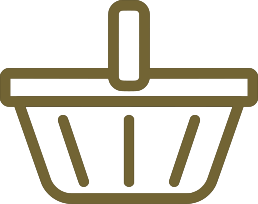Our Commitment : Cultivation and winemaking in harmony with nature
The wine is made in the earth, so its only natural that we care for the most precious asset we have. Here, there are no chemical fertilizers or herbicides. On the contrary, we cultivate diversity to create a dynamic living environment. In 2022, we planted triticale and rye, two grasses with fasciculated roots for the former ( surface roots ) and deep roots for the latter. These green manures will later be rolled to provide maximum carbon and slow down evaporation in summer. No surface or deep tillage will be carried out in 2022, we favor direct seeding. Since 2021, we have been adopting what’s known as gentle pruning, respecting the flow of sap.
Organic farming

We use alternative methods to treat our vines, such as horsetail decoction to boost the natural defenses of the plants or infusions of nettles, meadowsweet, and more. The horsetail, fern, and nettles are harvested on site to avoid any transportation and thus any use of fossil fuels, we make our own preparations. In 2022, we will use a method based on pheromones knowns as matting disruption to treat the grape moth. We go far beyond organic farming , we are committed to healthy and sustainable agriculture.

Thanks to mobile chicken coops, about thirty hens help us aerate the soil and gently fertilize it. Chicken droppings are very rich in nitrogen, phosphorus, potassium, and calcium. Moreover, the mineralization of their droppings is rapid. We hope to soon add more chicken coops, aiming to reach 100 hens. In spring 2022, we will plant our own corn to e self- sufficient in our food chain and carbon neutral.
Our sheep are the smallest sheep in the world, they weave their way through the vineyards and help us in our natural weeding approach. Sheep manure is mainly rich in magnesium, nitrogen and phosphorus, it complements the chicken manure.
Agroforestry
It is the combination of as diverse a selection of trees as possible, wether fruit trees or not, with crops in our case, vines. There are several arrangements : hedgerows, intercropping between vineyards rows, or within the vineyards row itself. The goal is to modify wind patterns, provide shade for crops, and serve as a source of moisture and diversity. Some trees will be topped as a pollards ( within the rows ) while others will just be pruned.
In 2022, we planted 1,300 trees, including more than 200 in the middle of the vineyard rows. In total, we have 2 km of hedgerows over 6.5 hectares of vineyards, which serve as vital refuges for birds, insects, and also for mycorrhizal fungi.
Harvest

Our wine comes from a manual harvest, we do a pre-sorting in the vineyards, and then the harvest goes through a sorting table.


Our winemaking process is also very traditional, instead of a pneumatic press, we use an old ratchet press, respecting tradition and gentle handling. Our juice is clear with very little press juice, quality is always a priority.
Sorting is done on a vibrating sorting table, allowing us to select grape by grape. We remove any clusters, leaves, wood fragments, snails and other debris. Only the best grapes are kept, quality is all that matters.
Winemaking in dolium
This is our flagship cuvée, its the DNA of our estate. The winemaking process is done with whole grapes, without crushing, for 7 to 8 months, the grapes are then pressed, and aging continues for another 3 to 4 months. The full taste of the fruit is preserved, resulting in a lively wine, a pure emotion. We use no additives, no adjuvants ( sugar, wood, chips, yeasts, etc… ), in 2020, the Dolium cuvée is made without added sulfites.
While the Dolium is our flagship cuvée, the continued winemaking in 500- liter barrels is also important to us. This process creates a richer, aged wine with woody notes, which we soften through a specific cooperage.
In our concrete tanks, the winemaking process is simpler and more traditional.








